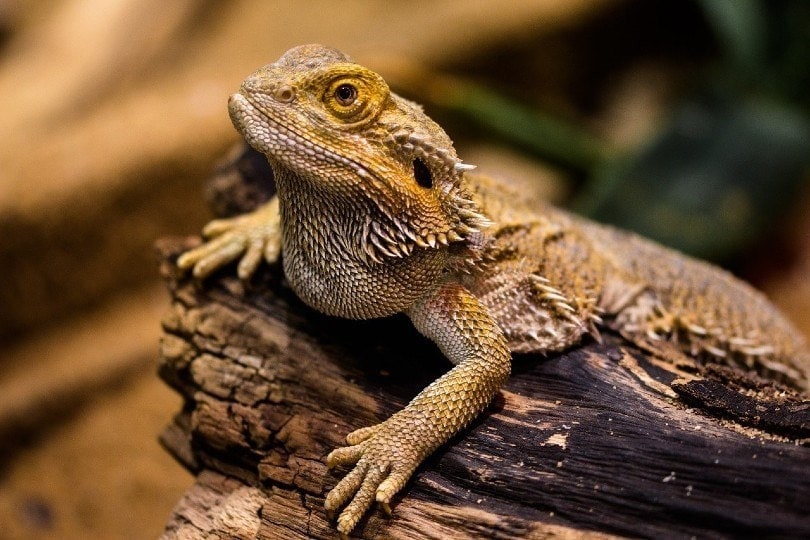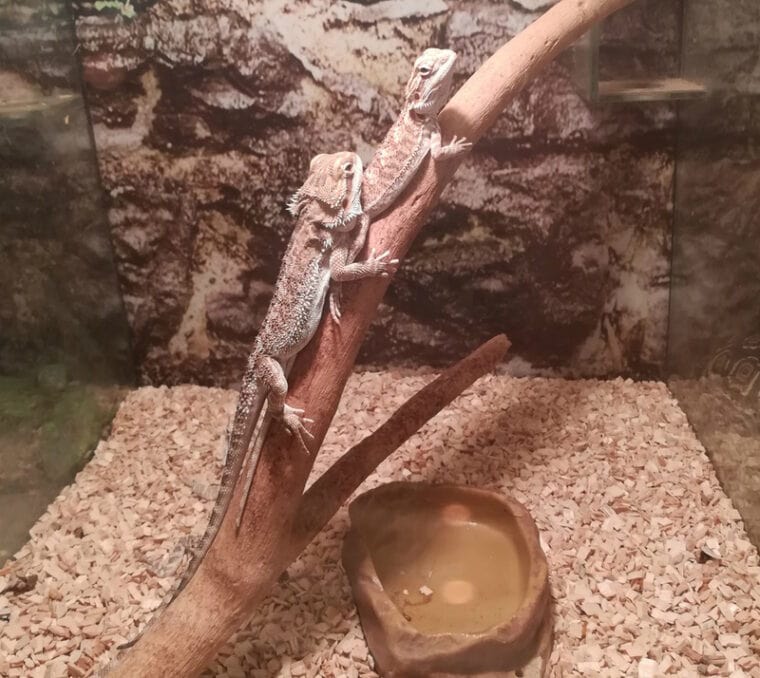
Bearded dragons come from arid, desert regions of Australia, where water is incredibly scarce. But, like all living animals, they need water to survive. In the wild, bearded dragons get most of the water they need from the plants and insects they eat, rather than directly from water sources. Getting them to drink from a water bowl can be difficult because it is so unnatural an activity for them.
Getting a beardie to drink water can be a challenge, but, below, we have highlighted six steps you can take to keep your dragon properly hydrated and prevent them from getting illnesses such as constipation.
Keep in mind that if your bearded dragon seems to need more water than usual or is becoming dehydrated more often this can be a sign of illness or husbandry problems and you should consult with an exotics veterinarian.
Bearded Dragons in the Wild
Bearded dragons come from Australia. Specifically, they come from deserts and other arid areas where water is very scarce. Most would not have access to bodies of water like lakes and rivers, and because it so rarely rains, they do not have access to rain as a water supply. As such, wild Beardies get the majority of the water they require through their diet, from the insects and vegetation they eat.
Because bearded dragons get most of their water from the food they eat, they are not accustomed to lapping at water or getting it from standing water. Your bearded dragon may also get much moisture from the diet but they should always have access to water.
The 6 Steps for Getting a Bearded Dragon to Drink Water
1. Try a Bowl
First and foremost, you do need to put a water bowl in a bearded dragon’s enclosure. Even if you don’t see them drinking from it, they may be having the occasional drink. The bowl should be shallow but big enough that the Beardie can climb in and soak if they wish. Over time, your Beardie may learn to drink from the bowl, but bear in mind that the high humidity in the tank means that the water level will go down naturally over time. Humidity of the enclosure will be affected by the water bowl size and placement; make sure you are monitoring the humidity and make adjustments as needed. Also, the warmer the location of the water bowl, the more the humidity increases.
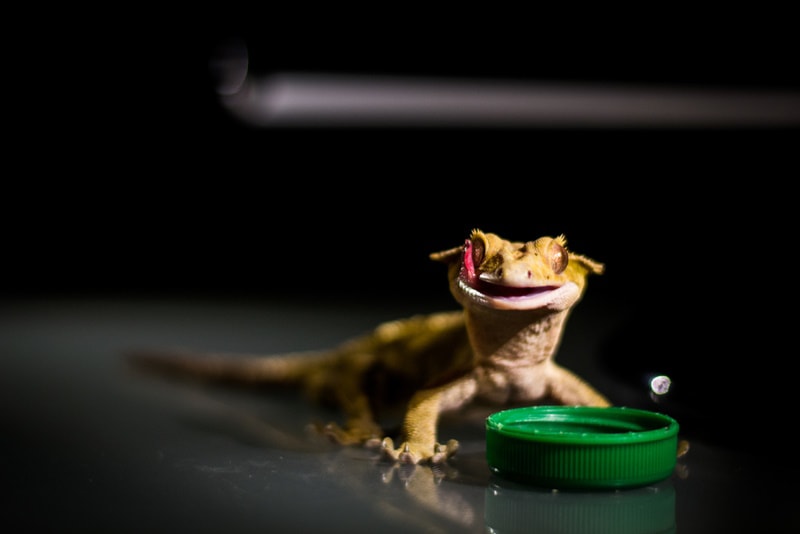
2. Spray Your Beardie
Sprinkle water on or mist your beardie’s face. have water on their noses, they may try and lick the droplets off, giving them much-needed hydration and encouraging drinking. You can try spraying the sides of the enclosure a few times a week too. Again, make sure you are not spraying enough to increase the humidity of the enclosure too much.
3. Choose Food with High Water Content
As they get water from their food sources in the wild, this should be one of the primary sources of hydration for pet bearded dragons, too. If your Beardie won’t drink water, try swapping out some of their existing food sources for those with higher water content. Watercress, bell peppers, and mustard greens are all high in moisture content and can form the basis of a good diet.
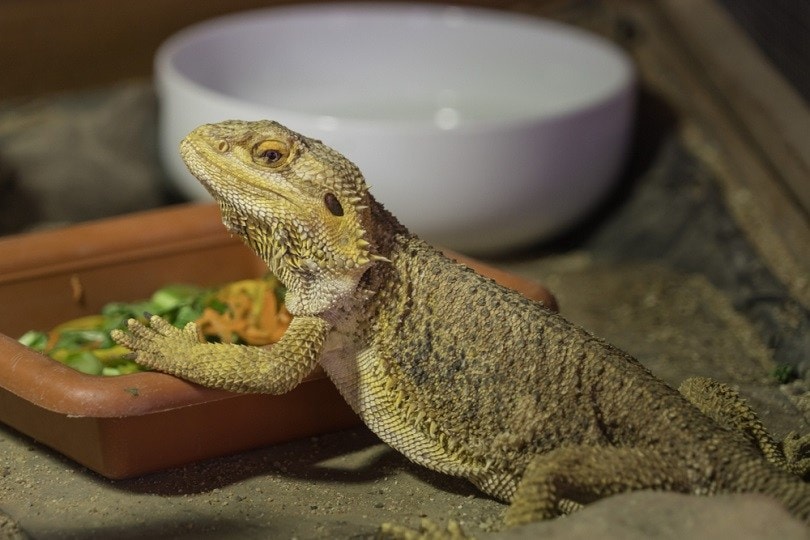
4. Spray Their Food
Failing that, you can spray water on the food you do feed. This can be a good way of increasing water content. Spray the greens you feed, and if you do spray insects, make sure it doesn’t kill them or inhibit their movement too much. The live food you give needs to move to catch the attention of your beardie so use a mist, rather than a direct spray.
5. Bathe Your Beardie
It may be an option to bathe your bearded dragon, but while some tolerate it and some love it, others become quite perturbed at the idea of being bathed. If it stresses your bearded dragon out, then this isn’t an option, but bathing your Beardie in lukewarm water will naturally introduce them to water and they will likely try drinking at least a little of the water.
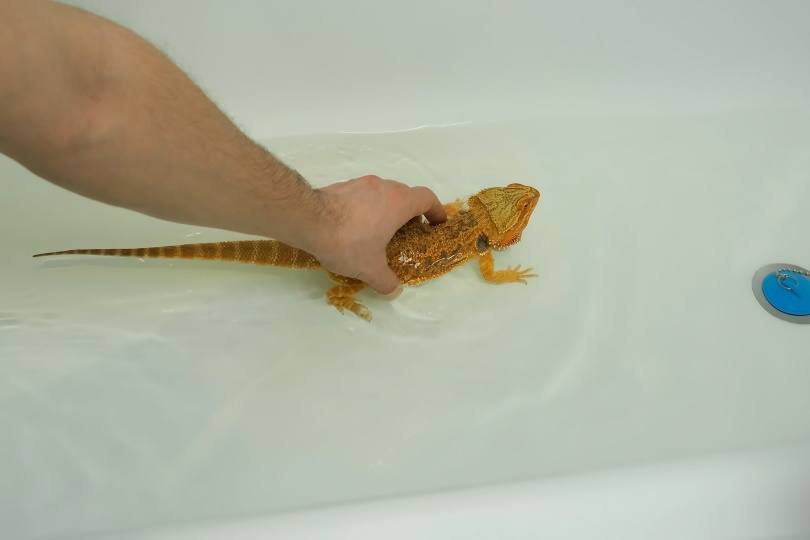
6. Contact a Veterinarian
If your beardie is getting dehydrated there may be more at play than just water intake. Some diseases will cause them to lose more water than they can take in. Get your friend examined by a veterinarian for assessment and treatment.
How Much Water Does a Beardie Need?
Bearded dragons don’t need large volumes of water. They need approximately 20 milliliters per kilogram of body weight, each day. And this does include water found in their food.
How Can You Tell If a Bearded Dragon Is Dehydrated?
Dehydrated bearded dragons will poop less often than normal. Their eyes will appear sunken and their gums can feel dry. Their saliva can look thick or stringy. A skin tent test can also be done which involves gently pinching a small amount of skin and letting go; in well hydrated beardie’s the skin moves back into place whereas if they are dehydrated the skin remains tented.
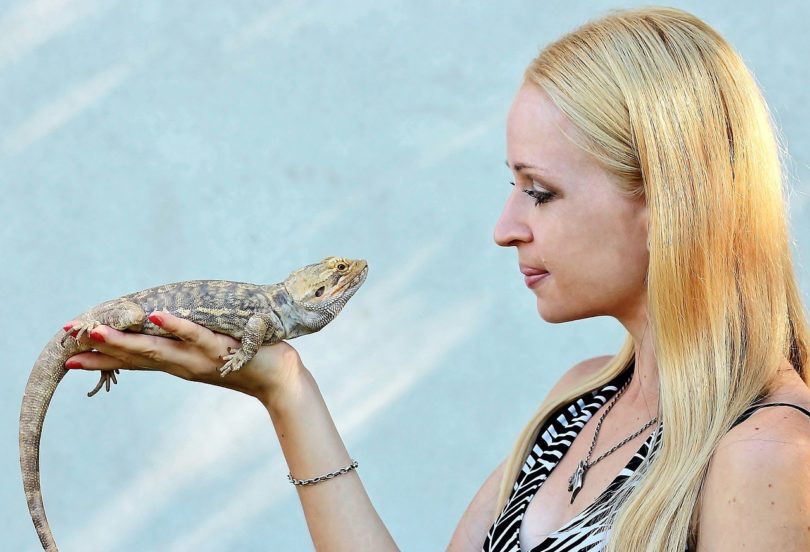
Can Bearded Dragons Swim?
Although they don’t often need to do so in the wild, bearded dragons can naturally swim. They inhale air and use their inflated lungs as a means of floating on the surface. They then use their muscular legs to propel themselves forward and direct their movement in the water.
Do Bearded Dragons Like Baths?
It depends on the individual bearded dragon. Some really enjoy being bathed and will willingly hop in the water. For others, it can be a highly stressful experience that should be avoided.
Conclusion
Bearded dragons are fascinating little pets. They are fun to watch, tolerate handling, and are easier than a lot of other lizard and reptile species to care for. However, there are some challenges to owning this type of reptile. You do need to meet their temperature and humidity requirements, which can make setting up an enclosure challenging, and they do require live feeding, which means having live roaches and other insects around.
It can also be difficult to get them to drink water but, above, we have provided six steps to help you ensure that your bearded dragon is meeting its required daily water intake. Keep in mind if your beardie is needing more water or getting dehydrated frequently this should be addressed with your veterinarian.
Featured Image Credit: ukmng, Shutterstock



